Classic Car Summer Cooling Checklist: How to Prevent Overheating This Season
Summer heat can be tough on classic cars—especially when it comes to keeping your engine cool and running smoothly. Overheating is one of the most common, yet avoidable, problems during warmer months. Without proper care, you risk costly repairs and breakdowns that can ruin your summer drives or shows.
That’s why we created this complete summer cooling checklist for classic cars—packed with expert tips to help you inspect, maintain, and upgrade the key components of your car’s cooling system. Whether you’re heading to a weekend car meet or planning a long summer road trip, following this step-by-step guide will keep your classic British car reliable and cool all season long.
1. Check and Replace Radiator Hoses to Prevent Overheating
Radiator hoses carry coolant between the engine and radiator, helping regulate temperature. Over time, heat and pressure cause hoses to crack, bulge, or weaken—leading to leaks and engine overheating.
How to Inspect Radiator Hoses:
-
Visually check for cracks, brittleness, swelling, or discoloration.
-
Squeeze hoses gently to find soft spots or areas that feel unusually spongy.
-
Inspect hose connections for leaks or loose clamps.
-
Replace any hoses showing signs of wear or damage with high-quality, model-specific radiator hoses.
Tip: Check your hoses every 3 months, especially before hot summer drives.
Shop Motaclan Radiator Hoses for Classic British Cars →
2. Inspect and Maintain the Radiator Fan for Optimal Cooling
The radiator fan cools your engine when driving speed isn’t enough to provide airflow—like in stop-and-go traffic or during slow summer drives.
What to Check:
-
Ensure fan blades spin freely by hand without resistance or wobbling. Tip: Stiff or wobbly blades reduce cooling efficiency.
-
Listen for grinding, rattling, or squeaking noises while running. Tip: Noises often signal worn bearings or motor issues.
-
Inspect electrical wiring and connectors for corrosion or damage. Tip: Clean and secure connections prevent sudden fan failure.
-
Verify the fan clutch engages and disengages properly if your car has one. Tip: A faulty clutch can cause overheating at low speeds.
3. Flush and Replace Coolant to Protect Your Engine
Coolant transfers heat and prevents corrosion inside your engine and radiator. Over time, coolant breaks down and becomes less effective, increasing the risk of overheating and damage.
Recommended Actions:
-
Schedule a full coolant flush at the start of summer. Tip: Regular flushing removes rust and deposits that block cooling passages.
-
Drain old coolant completely and clean the radiator if needed. Tip: Flushing the radiator boosts cooling performance.
-
Use fresh coolant specifically formulated for classic British cars. Tip: Using correct coolant protects your engine’s materials and seals.
-
Regularly check coolant levels during hot weather and top up as necessary. Tip: Low coolant is a common cause of overheating.
-
Inspect the coolant reservoir and radiator cap for cracks or leaks; replace if faulty. Tip: Faulty caps cause pressure loss and coolant boiling.
Shop Motaclan Coolants and Radiator Caps →
4. Check the Water Pump for Signs of Failure
The water pump circulates coolant through your engine and radiator. A failing pump can cause severe overheating and costly engine damage.
How to Spot Problems:
-
Look for coolant leaks or corrosion around the water pump. Tip: Early leak detection prevents major damage.
-
Listen for whining, grinding, or rattling sounds near the pump area. Tip: Unusual noises indicate worn bearings or impellers.
-
Check for wobble or play in the pump pulley by gently moving it. Tip: Excessive play suggests worn shaft bearings.
-
Replace worn bearings or seals promptly. Tip: Timely replacement avoids engine overheating.
Shop Motaclan Water Pumps for Classic Cars →
5. Inspect and Test the Thermostat to Ensure Proper Temperature Control
The thermostat regulates coolant flow based on engine temperature, helping your engine warm up quickly and stay within safe limits.
Testing and Maintenance:
-
Monitor engine temperature during warm-up to ensure it rises steadily. Tip: Temperature fluctuations may mean thermostat issues.
-
Replace any thermostat that sticks open or closed to prevent overheating or poor performance. Tip: Always fit a thermostat matched to your engine specs.
-
Check the thermostat housing and gasket for leaks or damage. Tip: Replace seals during thermostat service to avoid leaks.
-
Lubricate or replace housing bolts and seals when servicing. Tip: Proper sealing maintains system pressure and prevents leaks.
Shop Motaclan Thermostats and Gaskets →
6. Keep Your Engine Bay Clean and Well Ventilated
A clean and ventilated engine bay helps dissipate heat efficiently, preventing hot spots that stress your engine and cooling parts.
Maintenance Tips:
-
Remove dirt, leaves, and debris from radiator grills and air intake vents regularly. Tip: Blockages reduce airflow and increase engine temperature.
-
Clean dust and grime off engine components to improve heat dissipation. Tip: A clean engine bay cools more effectively.
-
Clear any blockages from cooling ducts or vents. Tip: Ensure all air passages are unobstructed for maximum airflow.
-
Consider adding extra cooling vents or fans if you frequently drive in slow, hot traffic. Tip: Additional cooling improves performance during summer congestion.
-
Inspect seals and weatherstripping to prevent water ingress and maintain airflow. Tip: Good seals help direct cooling air properly.
Shop Motaclan Cooling Fans and Ventilation Accessories →
FAQ: Classic Car Summer Cooling
Q1: How often should I flush my coolant?
A: Ideally, flush your coolant every 2 years or before the start of each summer season. If your car has been sitting unused for a while, it’s best to flush it before driving in hot weather to prevent corrosion and blockages.
Q2: Can I use any coolant for my classic car?
A: No. Always use coolant that’s compatible with your car’s engine type and materials. Some classic British cars require specific formulations to avoid damage to seals and metal components.
Q3: What are the signs of a failing thermostat?
A: Common signs include engine temperature staying too low, overheating, or temperature fluctuating rapidly during warm-up. A faulty thermostat can cause inefficient cooling and engine damage if left unchecked.
Q4: How can I tell if my radiator fan is failing?
A: Listen for unusual noises like grinding or squeaking, check if the fan blades spin freely by hand, and watch for overheating when stuck in traffic or slow driving. Electrical issues may cause the fan not to turn on when needed.
Q5: When should I replace my water pump?
A: Replace the water pump if you notice coolant leaks around the pump, hear whining or grinding noises, or feel wobble in the pump pulley. Timely replacement helps avoid costly engine overheating.
Q6: What maintenance can improve engine bay ventilation?
A: Regularly clear debris from radiator grills and air intakes, clean dust off engine components, check seals and weatherstripping for damage, and consider installing additional cooling vents or fans if you drive often in hot, slow traffic.
Ready to Keep Your Classic Car Cool This Summer?
Start working through this checklist today and give your classic British car the care it deserves. For peace of mind and reliable performance, choose high-quality cooling components designed specifically for classic marques.
👉 Explore Motaclan’s Cooling Range and find radiator hoses, water pumps, thermostats, coolant, and more — all built for your classic car’s perfect fit.
Shop Now →

 Chimaera
Chimaera Griffith
Griffith Tuscan
Tuscan MGA
MGA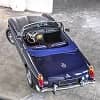 MGB, MGB GT & V8
MGB, MGB GT & V8 MG Midget
MG Midget MGF & TF
MGF & TF Rover 75 / MG ZT & ZT-T
Rover 75 / MG ZT & ZT-T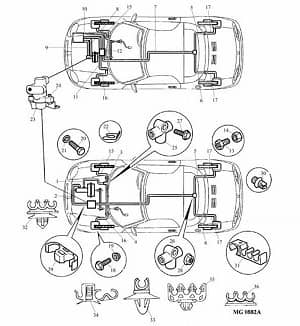
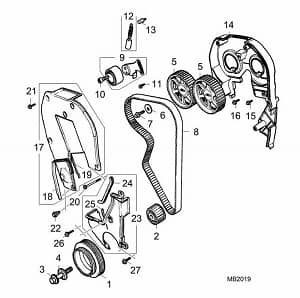
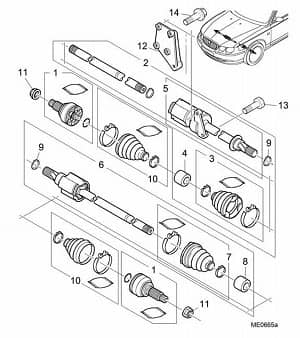
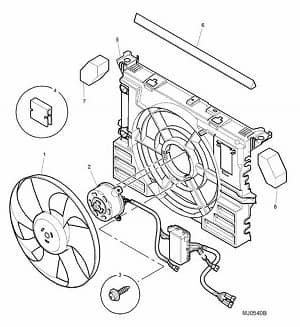
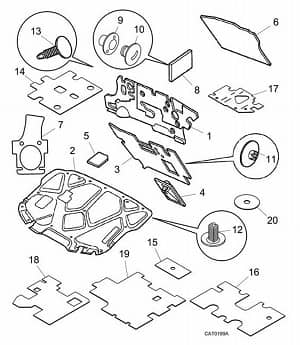
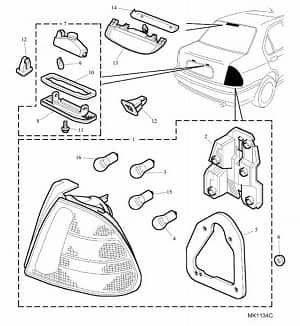
 Classic Mini
Classic Mini Wood & Pickett
Wood & Pickett Autoglym Products
Autoglym Products British Motor Heritage
British Motor Heritage Castrol
Castrol MG Car Club
MG Car Club TVR Car Club
TVR Car Club British Mini Club
British Mini Club